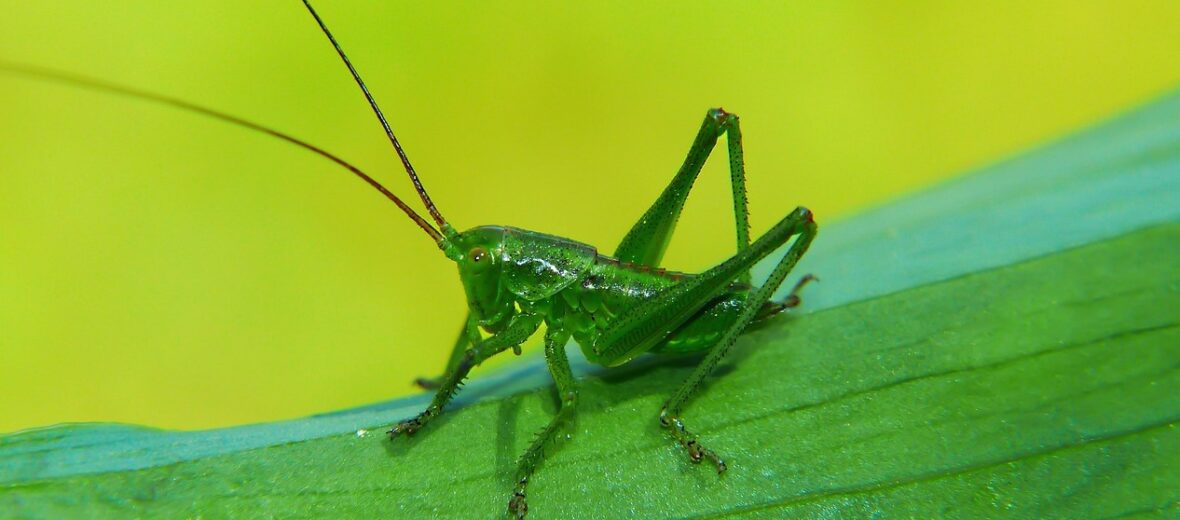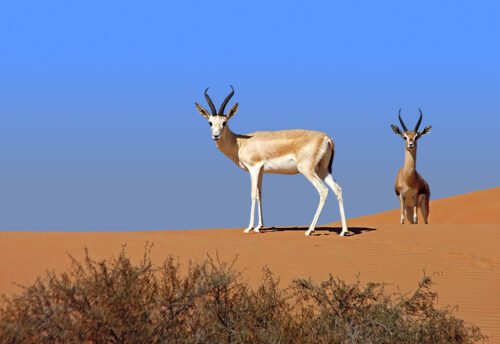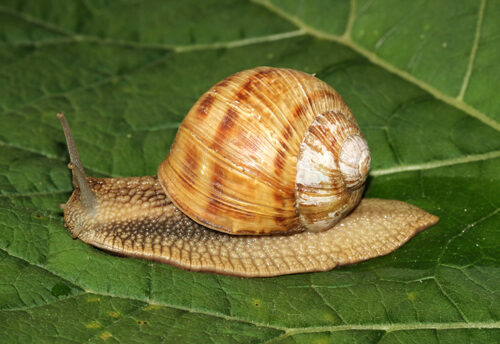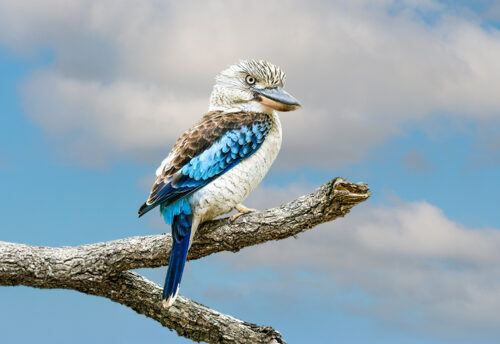
With over 11,000 known species of grasshopper worldwide, these critters are able to survive in a wide variety of climates, as well as in numerous habitats. Grasshoppers are found in tropical rainforests, temperate forests, meadows, areas near ponds and streams, rocky areas, and deserts. As much of a pest as they are the world over, they are actually considered good luck in Japan. Due to their massive numbers around the world, most hoppers/locusts are listed as Least Concern by the IUCN. There are a few species though that are listed as Endangered, due to habitat loss.
First the Stats…
Scientific name: Caelifera
Average weight: Up to 0.01 ounce
Length: Up to 5 inches
Lifespan: Up to 1 year
Now on to the Facts!
1.) Grasshoppers are diurnal (active during the day) herbivores (eat plant matter) that feast on a wide variety of plant matter and in great proportions.
2.) Their predators are many and include: birds, insects, rodents, reptiles, and even humans. Anyone care for a chocolate covered hopper?
3.) A grasshopper’s auditory organs are not located where you might think. Ears are not always located on your head. These critter’s ears are on their abdomen. The tympanal organ is located on the first abdominal segment and senses rhythm and intensity, but it cannot hear pitch.
4.) Locusts and grasshoppers signal their romantic intent by stridulating or crepitating with their hind legs. They simply rub their hind legs against their hardened wing edges and thus create a song to signify they want to get makin’ with the love.
5.) Hoppers cause billions of dollars of crop damage each year! In 1954, there was a plague of locusts that defoliated over 75 square miles of vegetation in Kenya!
But wait, there’s more on the grasshopper!
6.) When they need to jump, the grasshopper contracts its big flexor muscles, bending its hind legs at the knee joint. A special piece of cuticle inside the knee acts like a spring, storing up all the necessary energy. The grasshopper then simply relaxes its leg muscles, thus allowing the “spring” to release its stored up energy and then BOING! Off it goes.
7.) Besides being great jumpers, these insects can also fly. Often times they will start their flight via a powerful jump.
Did you know…?
Locusts are able to differentiate healthy human cells from cancerous ones. They can even pick out individual cancer cell lines. Scientists are working on a way to incorporate this ability via a machine. If successful, cancer might become a treatable disease.
8.) These critters first appeared during the Carboniferous period, over 300 million years ago.
9.) Have you ever picked up a grasshopper and had it spit what looks like “tobacco juice” on you? It’s a brown liquid that they regurgitate on perceived predators as a means of self defense. Relax though, it’s harmless. It’s just a little disturbing.
10.) Females lay up to 25 egg pods each season. Each pod contains about 15 – 150 eggs, depending on the species. The eggs remain underground for about 10 months to 10+ years before finally hatching into nymphs during spring or in the beginning of summer.
11.) Grasshoppers and locusts eat about half their body weight in plants every day!
Now a Short Grasshopper Video!
Also, check out the Critter Science YouTube channel. Videos added frequently!
Want to suggest a critter for me to write about? Let me know here.



